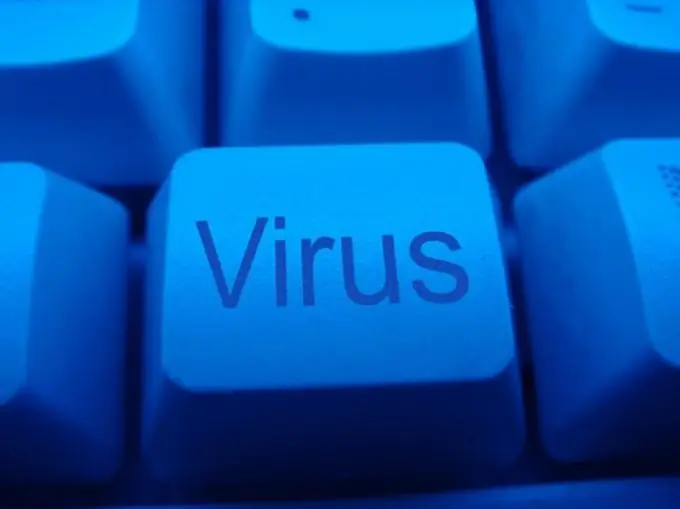Even if your computer is protected by antivirus software, when surfing the web, there is always the danger of getting a malicious file on your hard drive. It can manifest its presence in different ways: block access to the Internet or the operation of certain programs, launch an advertising or pornographic banner on your desktop.

Instructions
Step 1
The Dr. Web support site offers a free healing utility called Drweb Curreit. Download it and run it in deep scan mode
www.freedrweb.com/cureit/.
Step 2
If your computer has other protection installed, disable it. Antiviruses evaluate the activity of third-party programs as a potential danger and try to eliminate it. Accordingly, two defenders of your computer will converge for life and death, trying to remove each other.
Step 3
Some viruses are registered in the "System Restore" option. Accordingly, after disinfection of the computer, they are restored. Please disable this function before checking.
Step 4
If a virus has entered a protected area of the system (kernel), it starts up along with Windows. In this case, the treatment will be ineffective. With the computer turned off, disconnect the hard drive and set the slave mode with jumpers. Jumper combinations are usually indicated on the top of the hard drive.
Step 5
Connect the hard drive to another computer with a reliable antivirus program installed. Run it, and specify your hard drive as the scan area.
Step 6
If this is not possible, create a special boot disk with the healing utility and start the computer with it. To do this, download the disk image from the Dr. Web support page
Step 7
Insert the disc into the drive and start the Nero program. Check the Nero Burning ROM box and close the window that opens. In the "File" menu, select the "Open" command and select the downloaded file in the browse window. For reliability, set a low write speed. Click Burn. You can use any other disc creation program instead of Nero.
Step 8
Turn on your computer. After the initial loading, an information line will appear with approximately the following content: "Press Delete to setup …" Instead of Delete, another key can be specified, usually F2 or F10. Click it to enter the BIOS settings menu.
Step 9
Find the section that is responsible for the boot order of the system. It may be called Boot Record. It will list the names of bootable devices: USB, FDD, CD- or DVD-ROM, HDD. Use the control keys to assign the boot from the optical drive. Press F10 to save your changes. Answer "Y" to the system question.
Step 10
Download the "User's Guide" and read it before restoring your system.
Insert the disc into the drive and restart your computer. Choose one of the download modes. Perform a full scan of your computer following the instructions in the Manual.






